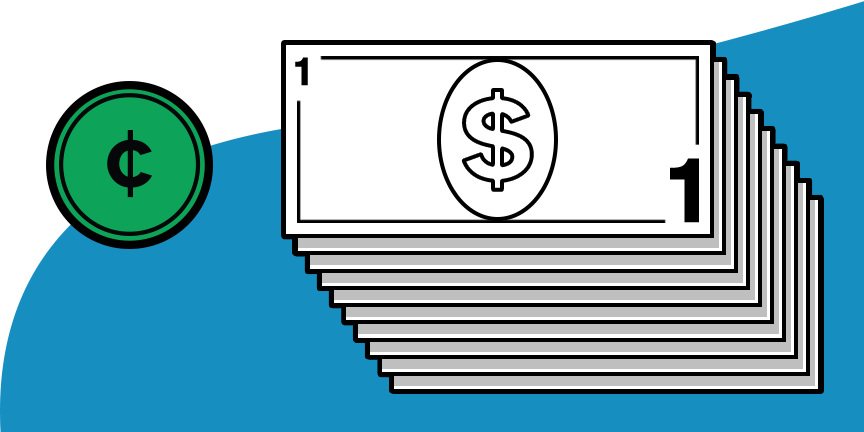Foundation Giving for Disability Resources
Priorities and Trends Report

About the Report
One in four adult Americans and an estimated 1 billion people globally experience disability, but foundation funding for disability only represents approximately two cents of every foundation dollar awarded.
Foundation Giving for Disability: Priorities and Trends offers a first-ever, detailed examination of how U.S. foundations focus their support for disability communities. It serves as a resource for understanding the scale and priorities of current support and provides a baseline for measuring changes in funding going forward.
Disability Grantmaking Resources
Central to the mission of the Disability & Philanthropy Forum is expanding the leadership and participation of disabled people across the philanthropic sector, fostering inclusive workplace cultures, and increasing disability-inclusive grantmaking. Working toward all three of these goals is essential to shift toward a more equitable approach to disability grantmaking and truly transform the sector.
A commitment to disability-inclusive grantmaking begins with recognizing two key facts:
1. No matter what issues your work may focus on, from civic engagement to climate justice to arts and culture, disability is deeply interconnected.
2. Disability does not exist in a vacuum and cannot be considered in isolation. As such, we must understand and address the ways in which disability overlaps with all other facets of a person’s identity, such as race, immigration status, and LGBTQIA+ identities.
Ready to catalyze your organization’s disability grantmaking? The five steps below will help you start the journey.
1. Ensure disability inclusion is a criterion for all requests for proposals you develop.
By asking potential grantees about how they will include people with disabilities before extending funding, disability inclusion can be included from the start of new grantmaking and ensure that disability inclusion becomes an organic part of the funding, rather than an add‐on. It also sends an important message to potential grantees about the importance of including people with disabilities.
To better understand and learn from disability-inclusive grantmaking practices, foundations can use the following questions both for internal reflection and as a supplemental grantee reporting tool:
- What specific activities related to disability did you undertake within the grant period? What were the main lessons learned from these activities?
- How, if at all, did the commitment of your organization’s staff and leadership change over the course of the grant? Consider internal practices among staff and Board membership, as well as external processes such as events and outreach.
- Which disability organizations and/or disabled leaders did you partner with on the work? How might you continue these collaborations?
- Were there any specific lessons learned related to budgeting? If you explicitly budgeted for disability-related expenses, how did the budget
estimates align with actual expenses? - For grants that are ending, how do you see your work and/or organizational efforts on disability inclusion progressing?
2. Ask the networks, organizations, and collaboratives you fund which if disability organizations participate and how they could strengthen that participation.
Too often disability organizations work in parallel to other nonprofits and are not part of broader coalitions and networks. Oftentimes including groups with disability expertise can enrich the understanding of inequality and bridge gaps between social movements. If the network or collaborative does not yet include a disability member, support your grantee to build these relationships and explore the most strategic approach to doing so.
3. Involve people with disabilities in agenda-setting done through convenings or other strategic discussions.
Similar to working with collaboratives and networks, convenings offer a unique opportunity to bridge communities, facilitate learning, and build relationships. Inviting speakers with disabilities to convenings and other key agenda-setting meetings will help ensure that the perspectives and priorities of people with disabilities inform mainstream field conversations as well as the analysis of strategic priorities.
4. Require events you fund to be accessible.
Accessibility helps ensure participation of people with disabilities and can also spark deeper conversations about participation of people with disabilities in broader programmatic efforts. Requiring accessibility at all events not only leads to substantial increases in participation of people with disabilities, but also sends an important signal. This may require additional resources, which should be built into budgets (just as line items such as translation might be) rather than be considered “extra.”
5. Discuss how grantees’ diversity, equity and inclusion efforts should consider disability in addition to and overlapping with other identity groups.
Disability is often completely absent from diversity, equity, and inclusion efforts. Exploring why and how grantee organizations think about disability inclusion amongst their staff, advisory boards and governance can lead to practical changes (and funder support) that strengthen disability inclusion at an institutional level. Considering disability does not diminish a focus on race, gender or other aspects of diversity, but rather amplifies it. Remember that identities overlap!
See the two PDF guides below for a more in depth look at disability grantmaking in action:
Looking for a checklist to help track progress and keep your accessibility and inclusion efforts going? The MacArthur Foundation 100&Change: Disability Inclusion Guidelines are a great place to begin.
